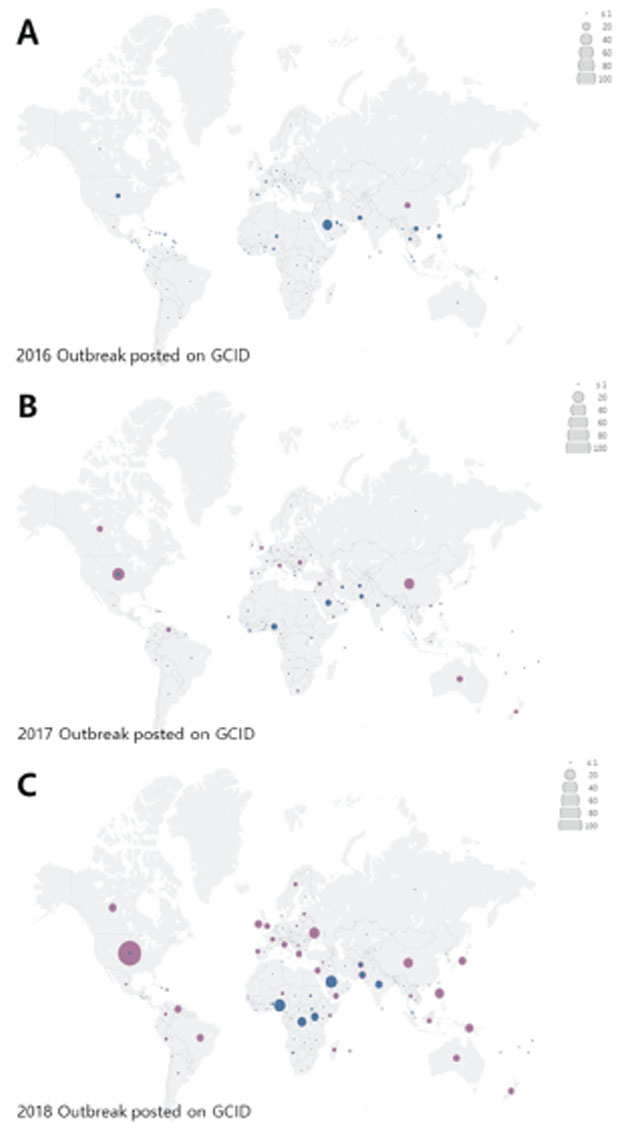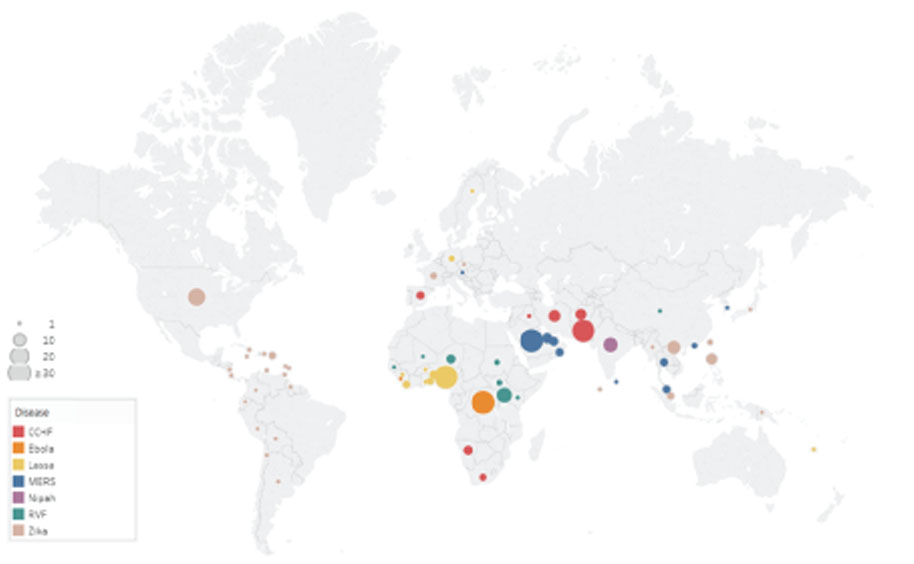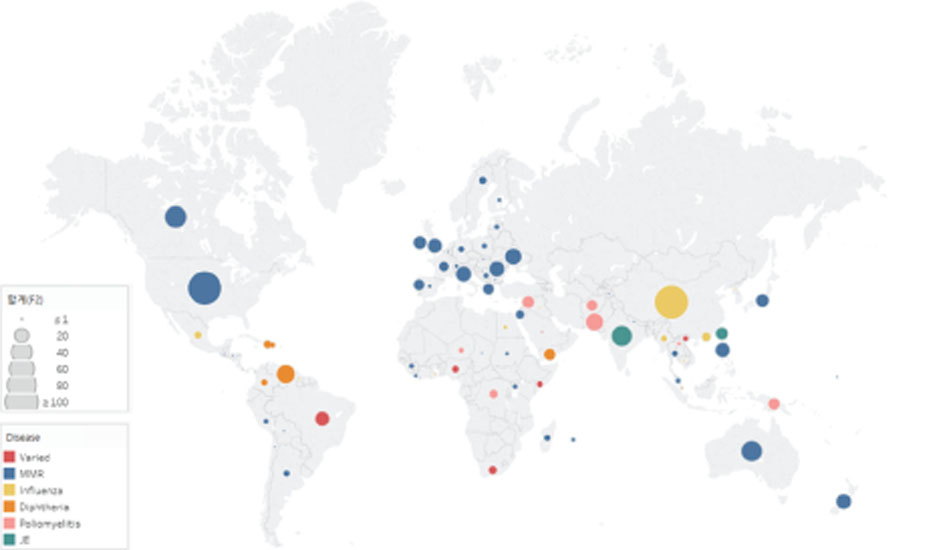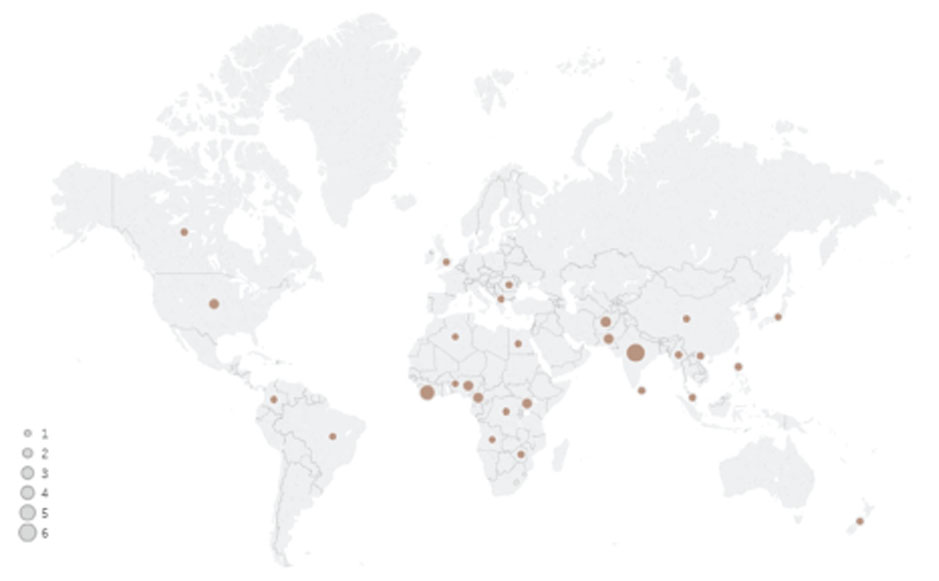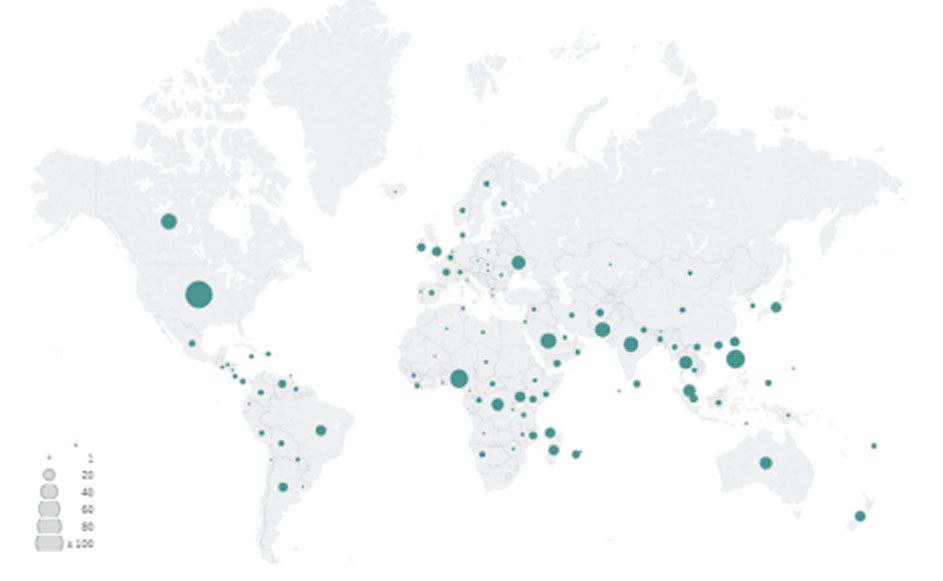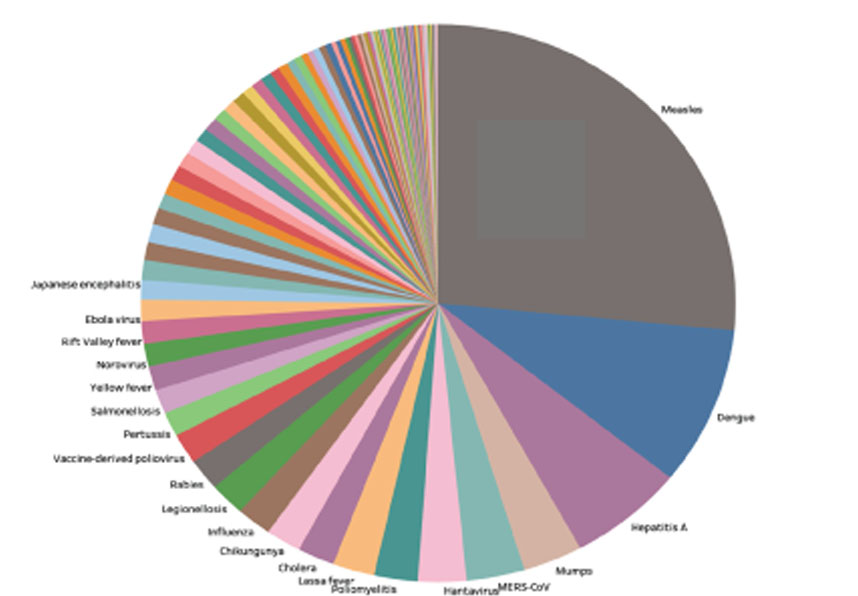J Bacteriol Virol.
2019 Sep;49(3):141-151. 10.4167/jbv.2019.49.3.141.
World Outbreak Trend of Infectious Diseases with Surveillance
- Affiliations
-
- 1Department of Microbiology and Immunology, Seoul National University College of Medicine, Seoul, 03080, Republic of Korea. hesss@snu.ac.kr
- 2Global Center for Infectious Diseases, Seoul National University College of Medicine, Seoul, 03080, Republic of Korea.
- 3Institute of Endemic Diseases, Seoul National University Medical Research Center, Seoul, 03080, Republic of Korea.
- KMID: 2468034
- DOI: http://doi.org/10.4167/jbv.2019.49.3.141
Abstract
- The diverse infectious diseases can occur everywhere in the world, but high-risk infectious diseases should be monitored immediately after the occurrence, and be controlled not to spread to the public. Other highly contagious ones also should be screened with the surveillance system and made to be prevented from a serious effect on public health. The outbreak information, articles and news reports concerning global infectious disease outbreaks were collected from known web-based resources and deposited in Global Center for Infectious Diseases since 2016. The number of reports collected from various sources was analyzed on the respect of Blueprint priority diseases and vaccine-preventable diseases, and the characteristic outbreak trend was shown in the geographic distribution and the so-called socio-economic level of countries. The WHO R&D Blueprint priority diseases are being reported especially in the region of Africa and Asia. The vaccine-preventable and other infectious diseases also are reported continuously and world-widely. They threaten the safety of life continuously in public. Therefore, keeping close observation and strengthening infectious disease surveillance is needed, and more effort to expand the collecting resources to get more outbreak information is warranted.
Keyword
Figure
Reference
-
1. Boughner LA, Singh P. Microbial Ecology: Where are we now? Postdoc J. 2016; 4:3–17.
Article2. Abat C, Chaudet H, Rolain JM, Colson P, Raoult D. Traditional and syndromic surveillance of infectious diseases and pathogens. Int J Infect Dis. 2016; 48:22–28.
Article3. Grout A, Howard N, Coker R, Speakman EM. Guidelines, law, and governance: disconnects in the global control of airline-associated infectious diseases. Lancet Infect Dis. 2017; 17:e118–e122.
Article4. Martini M, Gazzaniga V, Bragazzi NL, Barberis I. The Spanish Influenza Pandemic: a lesson from history 100 years after 1918. J Prev Med Hyg. 2019; 60:E64–E67.5. Drouin S, Collins DL. PRISM: An open source framework for the interactive design of GPU volume rendering shaders. PLoS One. 2018; 13:e0193636.
Article6. Wolicki SB, Nuzzo JB, Blazes DL, Pitts DL, Iskander JK, Tappero JW. Public Health Surveillance: At the Core of the Global Health Security Agenda. Health Secur. 2016; 14:185–188.
Article7. WHO. 2018 Annual review of the blueprint list of priority diseases. https://www.who.int/blueprint/priority-diseases/en/.8. Pinheiro FP, Corber SJ. Global situation of dengue and dengue haemorrhagic fever, and its emergence in the Americas. World Health Stat Q. 1997; 50:161–169.9. Simmons CP, Farrar JJ, Nguyen vV, Wills B. Dengue. N Engl J Med. 2012; 366:1423–1432.
Article10. Dyer O. Dengue: Philippines declares national epidemic as cases surge across South East Asia. BMJ. 2019; 366:l5098.
Article11. Laxminarayan R, Kakkar M, Horby P, Malavige GN, Basnyat B. Emerging and re-emerging infectious disease threats in South Asia: status, vulnerability, preparedness, and outlook. BMJ. 2017; 357:j1447.
Article12. Mourya DT, Yadav PD, Ullas PT, Bhardwaj SD, Sahay RR, Chadha MS, et al. Emerging/re-emerging viral diseases & new viruses on the Indian horizon. Indian J Med Res. 2019; 149:447–467.
Article13. Al-Tawfiq JA, Omrani AS, Memish ZA. Middle East respiratory syndrome coronavirus: current situation and travel-associated concerns. Front Med. 2016; 10:111–119.
Article14. WHO. Ebola outbreak in the Democratic Republic of the Congo declared a Public Health Emergency of International Concern. https://www.who.int/news-room/detail/17-07-2019-ebola-outbreak-in-the-democratic-republic-of-the-congo-declared-a-public-health-emergency-of-international-concern.15. Fenollar F, Mediannikov O. Emerging infectious diseases in Africa in the 21st century. New Microbes New Infect. 2018; 26:S10–S18.
Article16. García-Gómez P, Jiménez-Martín S, Labeaga JM. Consequences of the Economic Crisis on Health and Health Care Systems. Health Econ. 2016; 25 Suppl 2:3–5.
Article17. Edwards KM, Hackell JM. COMMITTEE ON INFECTIOUS DISEASES. THE COMMITTEE ON PRACTICE AND AMBULATORY MEDICINE. Countering Vaccine Hesitancy. Pediatrics. 2016; 138:e20162146.
Article18. WHO. New measles surveillance data from WHO. 2019. https://www.who.int/immunization/newsroom/new-measles-data-august-2019/en/.19. Mahase E. Measles cases at highest point since 2006 as outbreaks continue to spread. BMJ. 2019; 366:l5141.
Article20. CDC. Measles Outbreaks. 2019. https://www.cdc.gov/measles/cases-outbreaks.html.21. Dubé E, Gagnon D, Nickels E, Jeram S, Schuster M. Mapping vaccine hesitancy--country-specific characteristics of a global phenomenon. Vaccine. 2014; 32:6649–6654.
Article22. McKee C, Bohannon K. Exploring the Reasons Behind Parental Refusal of Vaccines. J Pediatr Pharmacol Ther. 2016; 21:104–109.
Article23. Chang K, Lee SY. Why do some Korean parents hesitate to vaccinate their children? Epidemiol Health. 2019; 41:e2019031.
Article
- Full Text Links
- Actions
-
Cited
- CITED
-
- Close
- Share
- Similar articles
-
- A Narrative Review of Syphilis Notification Systems in Korea: Change to Mandatory Surveillance System
- Surveillance System for Infectious Disease Prevention and Management: Direction of Korea’s Infectious Disease Surveillance System
- National Infectious Diseases Surveillance data of South Korea
- Neglecting the neglected during the COVID-19 pandemic: the case of leptospirosis in Sri Lanka
- Post COVID-19 Emerging Infectious Diseases: What is the Next Pandemic Agent?

